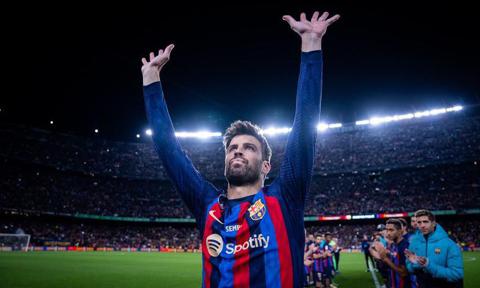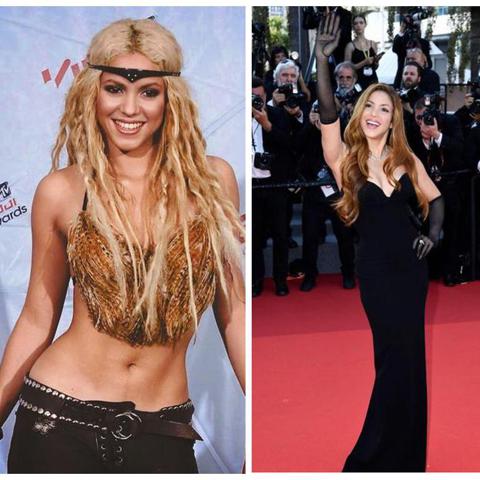
Ace footballer Gerard Pique announced his retirement in November last year after a stellar career spanning 14 years with FC Barcelona and with Manchester United before that.
The footballer has been embroiled in a fair share of controversies surrounding his relationship with ex-partner Shakira over the years, but mainly saw fame through his outstanding performance as a defender. Everything aside, it’s no secret that Pique is one of the fittest sportsmen in the world and undergoes intense training to maintain his performance level and physique.
The footballer has a strict schedule when it comes to his diet and lifestyle with clearly defined meal compositions and workout styles. His typical workout consists of warm-ups, lots of running, and specific leg exercises, which focus on building stamina and energy on the field.
Let’s take a look at the 35-year-old’s workout and diet routine that marked the energy and stamina we saw on the field.
Warm-ups
The player kicks off his workout with a warm-up that usually is 25 rounds on the football field, which is then followed by running, jogging and sprints. This helps him apply different variations of power and speed that are required on the field during a match. He works out for 3-4 hours every day.
Injury prevention
Pique undergoes high intensity training or rigorous sprinting exercises for short periods of time to help increase his power on the field. To overcome injuries in the hamstring area, which is common among footballers, he performs hamstring curls regularly and, for this, he enlists the help of a gym partner. The Spaniard also performs side bends and lunges to keep him free from other injuries in the hip area and build the muscle groups vulnerable to injuries.
Technical drills
Technical soccer drills and exercises are designed to promote a player’s technique and skills. Players will gradually learn over a period of time the coordination and basic motor patterns they need to solve specific game related problems. The common categories of football drills are: agility, speed, and footwork drills; endurance drills; offensive and defensive lineman drills, defensive back drills; linebacker drills; quarterback drills; receiver drills; and running back drills. Pique usually performs hurdle and mirror exercises, hurdle top, and other tactical football field exercises. It has quick cone sessions, cutbacks, and hurdle tops.
Gym exercises
The footballer also does gym exercises such as pushups, pull-ups, and deadlifts. It builds strength and prevents injury which promotes agility and power on the field. Barbell back squats, dumbbell lunges, front squats, and shoulder presses are some of the most highly recommended gym exercises for footballers.
Tennis
Tennis goes hand in hand with football, especially for defender positions that demand huge footwork and upper-body coordination. In a video on a footballer’s workout, by Guru Sobers, Pique can be seen training with Romeo Beckham for a tennis session of around 1 hour.
Sand training
Sand training is a simple, low-impact form of resistance training. This type of exercise is recommended for football players because the soft surface of sand helps cushion the impact of limbs and joints on the ground. The simple actions of slowing or stopping creates deceleration forces which the body has to absorb. Most of Pique’s technical training is carried out on the sand. Sand training is pretty common among footballers with a focus on combining it with cone exercises for tactical soccer training.
The main idea is to give maximum resistance and a simulation of high-intensity performance, with a short burst of energy as required for the actual game. This gives impetus to explosive movements required to quickly change directions. Pique also does sand climbing which improves grip and prevents injury.
Medicine ball training
Medicine ball forms a good part of Pique’s workout because it allows him a range of movements and works like any other fancy exercise without the fussy equipment, while still building muscles, agility, balance, speed, and strength. This is especially efficient for injury recovery and adds resistance training to metabolic exercises. But most importantly it specifically helps with explosive power and balance. Thus you can also invest in a medicine ball and be consistent to reap the most benefits from an athletic front. The muscles worked in this exercise include the shoulders, triceps, glutes, back, and hamstrings, while the core redirects energy into the movement. Ultimately, this builds overall power and strength, but also spikes the heart rate, boosting cardiovascular health.
While Pique focuses more on exercises that improve his performance on the field, his workout routine still has some good exercise sets that you can employ in your next workout session nonetheless.
Six meals a day
The footballer eats six meals a day which also includes two snacks that are usually very healthy options like wheat pasta, bread and fruit. Though there is no stark consensus about the benefits of having six small meals a day, several types of research suggest it helps with weight loss and maintenance of blood sugar levels. It works with energy levels too.
Pique’s diets are usually intertwined with good sleep cycles that help in effective recovery and stamina. He focuses more on consuming adequate carbohydrates and proteins as required for his level of physical work.
His diet staples mainly consist of whole grain bread, eggs, milk, fruits, chicken, pasta, energy bars, and proteins.
Composition of Pique’s diet
Pique’s diet is segregated well with 15% protein intake, 60% Carbs, and the rest 30% is healthy fats like avocado and olive oil. Right before a game, Pique likes to eat a low fat salad doused in olive oil and a good carbohydrate-rich meal to give him energy on the field.
That’s all for Gerard Pique’s workout and diet plan. We would recommend you do your own research or consult with an expert before subjecting your body to any kind of strict diet plans or new workout schedules and only continue if they suit your body type and lifestyle.






